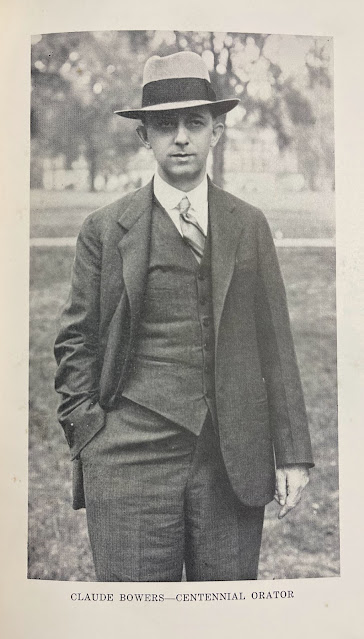Well, in New Orleans, anyway.
My son Amos alerted me to this item, which he found on Reddit, whatever that is.
Of course, I immediately began searching for more information. This item does appear in the New Orleans City Archives Police Department Mugshots Collection.
We learn several things about Helen from this arrest card. She had a known alias, Eveline Smith. She was "taken", presumably arrested, on New Year's Eve, 1915. She claimed to be a manicurist. Her "criminal occupation" was "suspicious person", which may have meant she was a young woman alone on the streets at night--a possible prostitute.
She apparently gave her birthplace as Illinois and age as 21, so she was born in 1894. Her residence was in Birmingham, Alabama. She was a bit over 5 feet tall, weighed 117 and slim of build. Her complexion was fair, eyes brown, hair black and had freckles on her arms and a few on her face. The last names of the arresting detectives are also given on the card.
On Ancestry.com I found the New Orleans Police Department Arrest Books 1881-1931. And there was Helen Oliver, in the First Precinct record for December 30-31, 1915. This resource gives us more information. Oliver's alias is spelled "Evelyn" Smith. She lived at 135 South Rampart and occupation is listed here as "none". Oliver was single and could read and write. She was arrested at her residence and charged with 1436 D & S [whatever those were], "pending investigation".
But wait, there's more. Also listed in that same page is George Smith, age 19, a single white male working as a clerk. He could also read and write. And guess what? His residence is also given as 135 South Rampart.
Smith was arrested at the St. Charles Hotel and given the same charges, pending investigation. The arresting officers for Helen Oliver and George Smith were the same--Det. Gregson and Ford Bitz [as best I can read the record]. A third officer was involved in the Smith arrest.
So far, the trail of Helen Oliver, "suspicious person" ends here. Was her residence really in Birmingham, and she was only in New Orleans temporarily? Were she and Smith some sort of couple in crime or romance or both? We may never know, but I'm sure there's more to the story.
I located a Helen B. Oliver in Birmingham city directories [via Ancestry] for 1914 and 1915, but she's probably not the same person. Helen B. was married to Robert E. Oliver and in 1914 they lived at 1227 Iroquois and 126 North 60th Street in 1915. I found nothing else about them.
A portion of Oliver's entry in the New Orleans Police arrest book
A portion of Smith's entry in the New Orleans Police arrest book








































